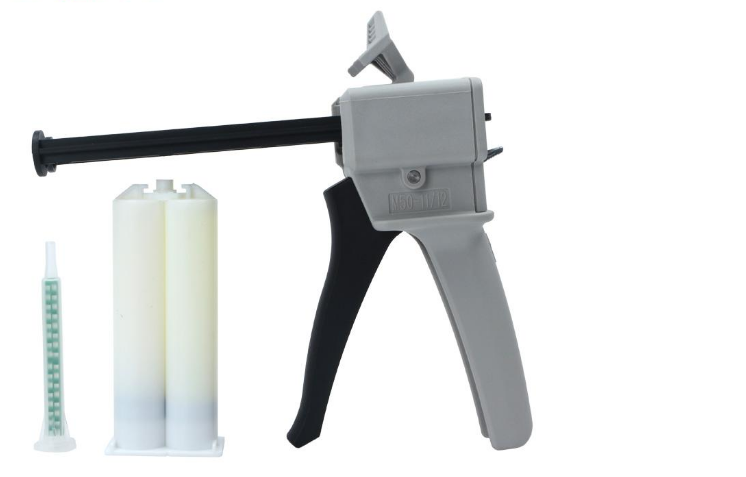- All
- Product Name
- Product Keyword
- Product Model
- Product Summary
- Product Description
- Multi Field Search


Views: 22 Author: Site Editor Publish Time: 2024-04-28 Origin: Site

In today's world, where adhesives play a crucial role in various industries and DIY projects, epoxy glue stands out as a versatile and reliable option. Understanding its structure, characteristics, and applications is essential for harnessing its full potential. This guide aims to provide a detailed exploration of epoxy glue, from its basic composition to its diverse uses.
Epoxy glue is composed of two main components: resin and hardener. When combined, these components undergo a chemical reaction, resulting in a strong and durable bond.
Epoxy glue offers several advantages, including high strength, corrosion resistance, and heat resistance. These properties make it suitable for a wide range of applications, both in industrial and household settings.
Epoxy glue finds extensive use in industries for metal bonding, composite manufacturing, and structural repairs. Its ability to withstand harsh conditions makes it ideal for demanding industrial environments.
In household DIY projects, epoxy glue is commonly used for repairs, bonding various materials, and crafting. Its versatility and strong adhesion make it a go-to adhesive for DIY enthusiasts.
![]()
Before applying epoxy glue, it's crucial to prepare the surfaces properly for optimal adhesion. Here's a step-by-step guide:
Surface Cleaning: Ensure that the surfaces to be bonded are clean, dry, and free from any dust, oil, or debris. Use a suitable cleaner or solvent to remove any contaminants.
Surface Roughening: In some cases, especially when bonding smooth or non-porous surfaces, roughening the surface with sandpaper or a wire brush can improve adhesion.
Mixing Ratio: Follow the manufacturer's instructions carefully to mix the epoxy resin and hardener in the correct ratio. Use a clean container and mixing tool to ensure thorough blending.
Once the surfaces are prepared, follow these steps for applying and bonding with epoxy glue:
Apply Epoxy: Use a brush, spatula, or applicator to apply a thin, even layer of epoxy glue to one or both surfaces to be bonded. Ensure complete coverage, but avoid applying too much adhesive.
Assembly: Immediately after applying the epoxy, join the surfaces together firmly. Apply pressure if necessary to ensure intimate contact between the mating surfaces.
Clamping: In some cases, using clamps or weights to hold the bonded surfaces together during the curing process can improve bonding strength.
After bonding, follow these steps for curing and finishing:
Curing Time: Allow the epoxy glue to cure for the recommended time as specified by the manufacturer. Avoid disturbing the bonded surfaces during the curing process.
Cleanup: Clean up any excess epoxy glue or spills with a suitable solvent before it fully cures. Once cured, epoxy glue can be difficult to remove.
Finishing: If necessary, sand or trim any excess cured epoxy to achieve the desired appearance or smoothness.
Despite its effectiveness, epoxy glue may encounter bonding failures due to various reasons. Here are some common issues to consider:
Improper Surface Preparation: Inadequate cleaning or roughening of surfaces can hinder adhesive bonding.
Incorrect Mixing Ratio: Deviating from the recommended ratio of resin to hardener can lead to incomplete curing and weak bonds.
Insufficient Bonding Time: Rushing the bonding process without allowing sufficient curing time can result in weakened adhesion.
To address and prevent bonding issues with epoxy glue, consider the following solutions and preventive measures:
Thorough Surface Preparation: Ensure surfaces are clean, dry, and properly roughened to promote adhesion.
Accurate Mixing: Follow the manufacturer's instructions meticulously to achieve the correct ratio of resin to hardener.
Extended Bonding Time: Allow ample time for the epoxy glue to cure and bond properly before subjecting the bonded surfaces to stress or load.
Quality Control: Regularly inspect and test bonded joints to ensure they meet desired strength and durability requirements.
Disposable static mixers are commonly used with epoxy glue to ensure thorough mixing of the resin and hardener components. Here's an overview of their operation and advantages:
Working Principle: Disposable static mixers feature a series of internal elements that facilitate the mechanical mixing of two-part adhesives as they pass through the mixer.
Advantages: These mixers offer consistent and uniform mixing, reduce waste by eliminating the need for manual mixing, and are convenient for single-use applications.
Follow these steps to effectively use disposable static mixers with epoxy glue:
Attach Mixer: Securely attach the disposable static mixer to the dual-cartridge epoxy dispenser.
Dispense Epoxy: Dispense the epoxy resin and hardener components simultaneously through the mixer by depressing the dispenser's trigger.
Mixing Process: As the components pass through the mixer, they are thoroughly mixed, ensuring a homogenous blend of resin and hardener.
Application: Apply the mixed epoxy glue to the prepared surfaces as per the bonding instructions.
Epoxy glue is a versatile adhesive with widespread applications in various industries and DIY projects. Its high strength, corrosion resistance, and heat resistance make it indispensable for bonding metal, composites, and household materials.
By ensuring proper surface preparation, accurate mixing, and adequate curing time, users can achieve reliable bonds with epoxy glue. Whether in industrial settings or home workshops, epoxy glue enhances productivity and efficiency, making it an essential tool for professionals and hobbyists alike.
Phone: (+86)-133-3268-9021(Mark Li)
Email: sales@gluecartridges.com
ADD: Dongguan, Guangdong, China.
Haijing Company A Sindesun Company
All Rights Reserved